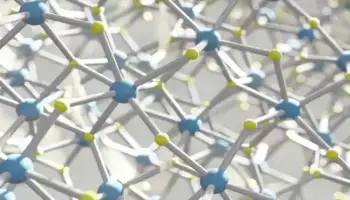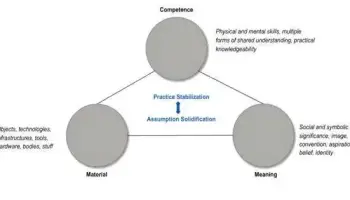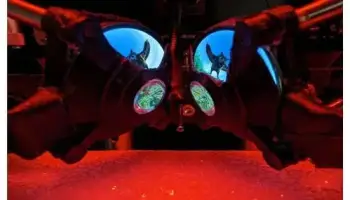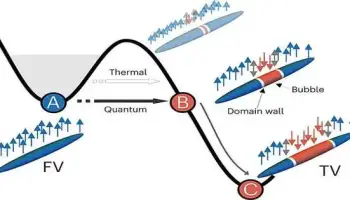According to a study published in the June 14 issue of Science Advances by researchers from the University of Connecticut, a new, biodegradable ultrasound that is significantly more powerful than previous devices could make brain cancer more treatable.
The American Cancer Society estimates that more than 18,000 Americans will die from brain cancer in 2023. Each year, more than 24,000 Americans are diagnosed with the disease.
When a person is told they have a cancerous brain tumor, the tumor is usually removed surgically, and chemotherapy is used to get rid of the cancer cells that are still there. However, the lining of the blood vessels prevents large molecules that could potentially harm the brain from passing through, which is why brain cancers are particularly resistant to chemotherapy.
Additionally, these prevent useful chemotherapeutics from treating other brain diseases and killing brain cancer cells. Using ultrasound to jiggle cells enough to open pores big enough to let the medicine through is one safe and effective way to get past the blood-brain barrier.
“We can use it repeatedly, allowing chemotherapy to penetrate the brain and kill tumor cells. There is already a commercially marketed implantable ultrasound device, but it is made of potentially harmful ceramic materials and must be surgically removed after treatment is completed.”
Biomedical engineer Thanh Nguyen.
However, it is difficult to get ultrasound through the thick human skull. In most cases, an MRI machine and multiple powerful ultrasound devices must be carefully focused on the tumor site immediately following chemotherapy administration in the hospital.
The procedure can be damaging to tissue and takes anywhere from five to six hours. Despite the fact that the majority of patients with aggressive brain cancer receive chemotherapy for months, it is rarely performed more than once. It would be much more effective to use ultrasound every time the patient received chemotherapy. However, the MRI-ultrasound procedure is rarely used because it is so time-consuming.
A biodegradable ultrasound device breaks down in minutes in water, demonstrating how quickly a device can break down in the body when it is no longer needed. Credit: Thanh Nguyen Lab/UConn.
Biomedical engineer Thanh Nguyen asserts, “We can avoid all of that by using an implanted device” within the brain itself. We can use it repeatedly, allowing chemotherapy to enter the brain and eliminate tumor cells. An ultrasound device that can be implanted is already on the market, but it is made of ceramics that have the potential to be toxic and must be removed surgically after treatment is finished.
Biodegradable, piezoelectric polymers are the focus of Nguyen’s research. A material is said to be piezoelectric when a small electrical current flows through it. They had previously developed a biodegradable, secure piezoelectric ultrasound brain implant, but it lacked the power of conventional piezoelectric ceramics. So the Nguyen lab with graduate understudies Thinh T. Le and Meysam Chorsi, who is co-exhorted by Designing Teacher Horea Ilies and Designing Senior member Kazem Kazerounian, alongside postdoc Feng Lin, utilized an absolutely new strategy to create a biodegradable polymer ultrasound similarly as strong as those made of ceramics.
The team wanted to use glycine crystals, an amino acid that is a common protein in the body and has recently been discovered to be very piezoelectric. Glycine is biodegradable and safe, but too much of it dissolves quickly in water. Additionally, glycine piezoelectric crystals are brittle and susceptible to shattering, making it extremely challenging to handle the material and transform it into an effective ultrasound device.
A novel solution was developed by the researchers. They intentionally shattered glycine crystals into pieces a few hundred nanometers in size after growing them. After that, they spun them with a biodegradable polymer called polycaprolactone (PCL) under high voltage to create piezoelectric films made of glycine nanofibers and PCL.
The film can produce ultrasound at 334 kilopascals at a driven voltage of less than 0.15 Vrms, which is comparable to that of a ceramic ultrasound brain implant. To safeguard the glycine-PCL film, the team covers it with other biodegradable polymers. One possible coating, poly-L-lactide (PLLA), breaks down in about six weeks.
Additionally, a glycine-based biodegradable ultrasound device can produce audible sound. It plays a song here. Credit: Thanh Nguyen Lab/UConn.
The device was tested on mice with brain cancer by Thanh Nguyen Lab/UConn. They treated the mice with PTX (paclitaxel), a strong synthetic chemotherapy that is powerful against mind disease yet hard to move beyond the blood-cerebrum hindrance. The glycine-PCL ultrasound successfully enabled PTX to bypass the blood-brain barrier; as a result, the tumors decreased, and the treatment doubled the lifespan of mice with brain cancer compared to mice with no treatment.
The mice also responded much better to the treatment with glycine-PCL ultrasound and PTX than to the treatment with PTX alone or PTX and ultrasound from the Nguyen lab’s biodegradable ultrasound device, which was originally a less powerful version based on PLLA.
In addition to the above-mentioned therapeutic efficacy, the team has already conducted a six-month safety evaluation of the brain-implanted device and found that it did not harm the mice’s health. Now, they will begin testing the drug’s efficacy and safety in large animals.
More information: Meysam T. Chorsi et al, Highly piezoelectric, biodegradable, and flexible amino acid nanofibers for medical applications, Science Advances (2023). DOI: 10.1126/sciadv.adg6075





